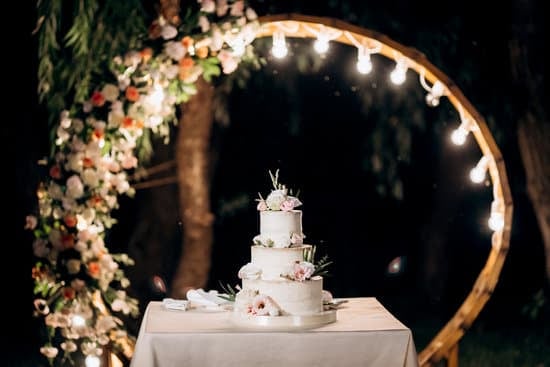Are you wondering who sits where at a wedding ceremony? Understanding the seating arrangement is an important aspect of planning a successful and inclusive event. From the front row to the placement of immediate family members, there are traditional and modern etiquette guidelines to consider when creating a seating plan for your big day.
The role of the parents of the bride and groom in the seating plan is crucial, as they often take prominent positions at the ceremony. Understanding where they should be seated can help ensure that they feel honored and involved in this special occasion.
In addition to the parents, there are other key players who need to be strategically placed at the wedding ceremony. From close relatives to the bridal party and their dates, each group has a specific place in the seating arrangement that reflects their connection to the couple getting married.
The Role of the Parents of the Bride and Groom in the Seating Plan
When it comes to the seating arrangement at a wedding ceremony, the role of the parents of the bride and groom is crucial in creating a seamless and inclusive seating plan for all attendees. Both sets of parents typically have reserved seats in the front row, as they play a significant role in the lives of the couple getting married.
Understanding where the parents sit and their involvement in the seating plan is essential for a well-organized and harmonious ceremony.
Traditionally, the mother of the bride sits in the first seat of the front row on the left-hand side, while the father of the bride sits next to her. On the right-hand side, you will find the mother of the groom seated closest to the aisle, with the father of groom next to her. This arrangement symbolizes their support for their children as they start this new chapter in their lives.
In modern ceremonies, some couples choose to blend traditional and contemporary elements into their seating arrangements. For instance, couples may opt for alternative arrangements that reflect their family dynamics and unique relationships with their parents. It’s important to communicate openly with both sets of parents to ensure that everyone feels comfortable with their seating placement.
To ensure that everyone understands who sits where at a wedding ceremony, consider including a visual representation or diagram of the seating plan in your wedding program or having ushers guide guests to their designated seats. Additionally, some couples choose to include personalized touches such as engraved nameplates or assigned seating cards placed on each chair to add an elegant touch to this special occasion.
Who Sits in the Front Row and Why
The front row at a wedding ceremony is often reserved for the closest family members and special guests of the couple. Traditionally, the front row is where the parents of the bride and groom are seated, along with any grandparents or other immediate family members who hold significant roles in the lives of the couple.
This placement acknowledges the importance of these individuals in the lives of the bride and groom and allows them to have a prime view of the ceremony.
In addition to parents and grandparents, it is customary for any siblings of the bride and groom to also be seated in the front row. If there are step-parents involved, it’s important to consider their relationship with the couple and find a seating arrangement that makes everyone feel respected and included. It may be appropriate to reserve a special section within the front rows for step-parents or to seat them alongside their spouse.
Close friends or relatives who are not part of the bridal party but still hold significant roles in the lives of the couple may also be seated in this first row. These could include mentors, godparents, or other important figures. The overall goal when determining who sits in this prime location is to recognize those individuals who have had a major impact on shaping the lives and relationships of both partners getting married.
| Key Individuals | Front Row Seating |
|---|---|
| Parents | Traditionally seated in front row as a mark of honor and respect |
| Siblings | Also typically seated in front row along with parents |
| Step-Parents | Consideration should be given to their relationship with individual family members, may sit alongside their spouse |
The Placement of Immediate Family Members and Close Relatives
When it comes to seating immediate family members and close relatives at a wedding ceremony, careful consideration should be given to honor their importance in the couple’s lives. The front rows of the ceremony are typically reserved for these special guests, acknowledging their significant role in the lives of the bride and groom.
Parents of the Bride and Groom
Traditionally, the parents of the bride will be seated in the front row on the left-hand side, while the parents of the groom will be seated on the right-hand side. This arrangement symbolizes their support for their respective children as they begin their new journey together as a married couple.
Siblings and Grandparents
Siblings of the bride and groom are usually given priority seating in the front row after their parents. If there are step-siblings or half-siblings, it is important to consider their relationships with the couple when determining their seating. Grandparents also hold significant importance and should be seated in a place of honor close to immediate family members.
Other Close Relatives
Close relatives such as aunts, uncles, and cousins may also be seated in the front rows or in close proximity to immediate family members. It is essential to ensure that all close relatives feel included in this special occasion and are given thoughtful consideration when planning their seating arrangements.
Creating a cohesive seating plan that honors immediate family members and close relatives can contribute to a harmonious and meaningful wedding ceremony experience for everyone involved. Understanding each family’s dynamics and considering any special circumstances can help ensure that all loved ones feel valued and appreciated on this momentous day.
Seating for the Bridal Party and Their Dates
When it comes to seating the bridal party and their dates at a wedding ceremony, there are a few traditional etiquette guidelines to consider. The bridal party typically includes the maid of honor, best man, bridesmaids, groomsmen, and sometimes flower girls or ring bearers. Here are some tips for how to handle the seating arrangements for the bridal party and their dates:
1. Bridal party members: The maid of honor and best man traditionally sit closest to the altar during the ceremony, often standing beside the couple as they exchange their vows. Bridesmaids and groomsmen may be seated in the front rows on either side of the aisle, or they may stand with the maid of honor and best man.
2. Dates of bridal party members: If members of the bridal party have dates attending the wedding, they may be seated together or separately depending on preference and space availability. It is essential to communicate with each member of the bridal party to determine their seating preferences for their dates.
3. Ushers: In some cases, ushers from the bridal party may assist with seating guests before taking their place in the ceremony. Ushers can help escort guests to their seats and ensure that families are seated in their designated areas.
In modern weddings, there is more flexibility when it comes to seating arrangements for the bridal party and their dates. It is important to consider everyone’s preferences while also adhering to any traditional customs that may apply. By communicating openly with all involved parties, couples can create a seating plan that ensures everyone feels comfortable and included on this special day.
How to Handle Divorced or Separated Parents at the Ceremony
Handling divorced or separated parents at a wedding ceremony can be a delicate and sensitive matter. It is important to consider the feelings and comfort of all parties involved to ensure a peaceful and enjoyable event for everyone. When it comes to seating arrangements, there are several options that can be considered depending on the circumstances.
One option is to seat the parents in different rows on opposite sides of the aisle, allowing each of them to feel comfortable and respected. This can help avoid any potential awkwardness or tension during the ceremony. Another approach is to seat the parents together in the front row, regardless of their current relationship status. This can show support for both parents and their roles in the lives of the bride and groom.
In some cases, a parent may choose not to attend the ceremony due to personal reasons related to their divorce or separation. In such instances, it is important to communicate openly with the bride and groom about their wishes and plans for seating arrangements. Ultimately, the goal should be to create an atmosphere of love and understanding, while also acknowledging any complicated family dynamics that may be present.
It is essential for couples who are planning their wedding to have open and honest conversations with their respective parents about seating preferences at the ceremony. This will allow both parties to express their thoughts and concerns, ultimately leading to a solution that ensures everyone feels valued and included on this special day.
| Seating Option | Description |
|---|---|
| Separate Rows | Parents are seated in different rows on opposite sides of the aisle |
| Togetherness | Parents are seated together in the front row despite their relationship status |
| Open Communication | Couples should have open conversations with their parents regarding seating preferences |
Special Considerations for Blended Families
Blended families bring their own unique dynamics to a wedding ceremony, and creating a seating plan that is inclusive and respectful of everyone’s relationships can be a delicate task. When it comes to seating arrangements for blended families, there are some special considerations to keep in mind to ensure that everyone feels comfortable and valued on the big day.
Communication Is Key
One of the most important aspects of accommodating blended families in the seating plan is open communication. Talk to the bride and groom about their family dynamics, any potential tensions, and any specific preferences or concerns they may have. It’s also essential to communicate with the parents of the couple and get their input on how they would like to be seated and who they feel most comfortable sitting near.
Creating an Inclusive Seating Plan
When it comes to blended families, it’s crucial to create a seating plan that acknowledges and respects each individual’s role in the lives of the couple. This may mean strategically placing family members who may not get along far from each other while ensuring that all parents feel equally honored and included. Be mindful of step-parents, half-siblings, and other extended family members when determining where they should sit during the ceremony.
Handling Divorced or Separated Parents
In cases where parents are divorced or separated, navigating the seating arrangement can be challenging. It’s important to take into consideration each parent’s relationship with the couple and their comfort levels. Some couples opt for a more traditional approach, with each parent sitting on opposite sides based on which side of the aisle they walk down with the bride or groom.
Others choose more modern options such as having both parents sit together in a unified front row. Ultimately, flexibility and sensitivity are key when considering where divorced or separated parents will sit at a wedding ceremony.
By taking these special considerations into account, couples can ensure that their wedding ceremony seating plan honors all family members’ relationships while creating an inclusive environment for this joyous occasion.
Tips for Creating a Seamless and Inclusive Seating Plan for All Attendees
Creating a seamless and inclusive seating plan for all attendees at a wedding ceremony can be a challenging task, but with careful consideration and attention to detail, it can be achieved successfully. One important aspect to consider when creating the seating plan is to take into account the relationships and dynamics of the guests who will be attending. Understanding the connections between guests will help in ensuring that everyone feels comfortable and included in the seating arrangement.
When creating the seating plan, it’s essential to consider the preferences and needs of the parents of the bride and groom. Traditionally, the mother of the bride sits in the first seat of the front row on the left-hand side, while the father of the bride sits next to her.
The same applies to the groom’s parents, with his mother sitting on the right-hand side and his father next to her. However, if there are any special considerations or family dynamics that need to be taken into account, it’s important to communicate with both sets of parents to ensure their comfort and inclusion.
In addition to considering parental seating, it’s also essential to determine who should sit in the front row. Typically, close family members such as grandparents and siblings of the bride and groom are seated in this prime location.
This allows them to have a clear view of the ceremony and feel closely connected to their loved ones who are getting married. By taking these factors into consideration when creating a seating plan, couples can ensure that all attendees feel valued and included at their wedding ceremony.
Understanding Traditional Versus Modern Seating Etiquette at Weddings
In conclusion, understanding the seating arrangement at a wedding ceremony is an important aspect of planning a successful and inclusive event. The role of the parents of the bride and groom in the seating plan cannot be overstated, as they traditionally occupy prominent positions in the front row.
It is important to consider the dynamics between divorced or separated parents, as well as special considerations for blended families, in order to create a seating plan that is respectful and accommodating for all.
When it comes to who sits where at a wedding ceremony, the front row is typically reserved for immediate family members and close relatives. This ensures that these important individuals have a prime view of the ceremony and can be fully present for this special occasion. Additionally, seating for the bridal party and their dates should also be carefully considered, taking into account their relationships with both the bride and groom.
As weddings evolve and embrace modern trends, it is crucial to understand traditional versus modern seating etiquette. While many couples may choose to adhere to customary practices, others may opt for more contemporary approaches that prioritize inclusivity and flexibility. Ultimately, creating a seamless and inclusive seating plan requires sensitivity towards individual circumstances while respecting tradition. By taking these factors into consideration, couples can ensure that their wedding ceremony is not only beautiful but also inclusive and meaningful for all attendees.
Frequently Asked Questions
Who Should Sit Where at a Wedding Ceremony?
The seating arrangement at a wedding ceremony typically follows a traditional layout. The groom’s family and friends are usually seated on the right side, while the bride’s family and friends are seated on the left. However, these roles can be interchangeable based on cultural or personal preferences.
Who Sits Where at the Ceremony?
At a wedding ceremony, the bride’s guests are usually seated on the left side of the venue, while the groom’s guests are seated on the right. In some cases, there may be designated seating for immediate family members or VIP guests in the front rows, closest to where the couple will exchange their vows.
What Is the Proper Seating at a Wedding?
Proper seating at a wedding is often determined by tradition, cultural customs, and personal preferences of the couple getting married. While it is common for the bride’s guests to sit on one side and the groom’s guests on the other, this arrangement can vary based on factors such as religious practices or familial dynamics.
Ultimately, clear communication from the couple about seating arrangements can help ensure that everyone feels welcomed and included in their special day.

I have been involved in marriages for over 20 years helping couples and singles understand more about them.





